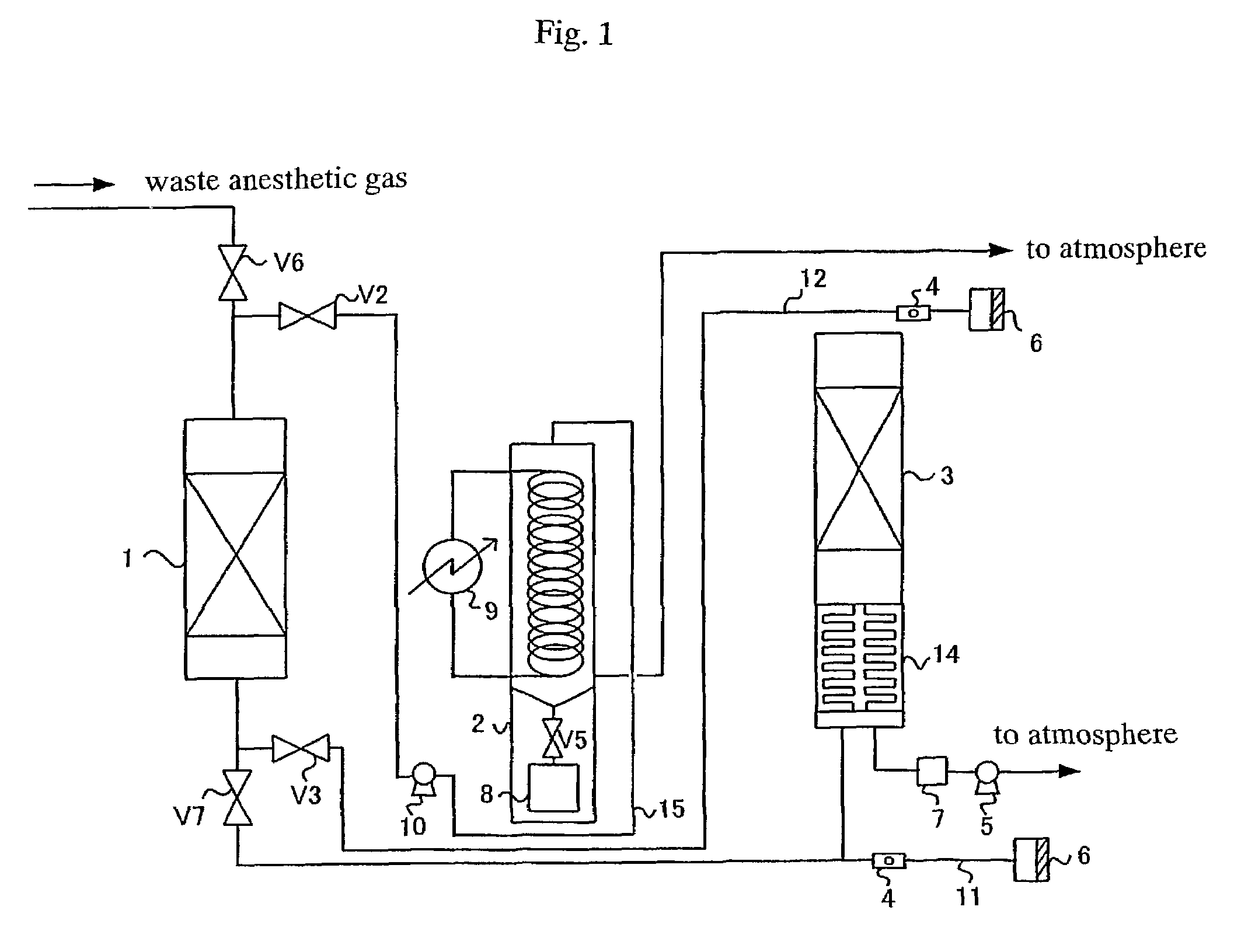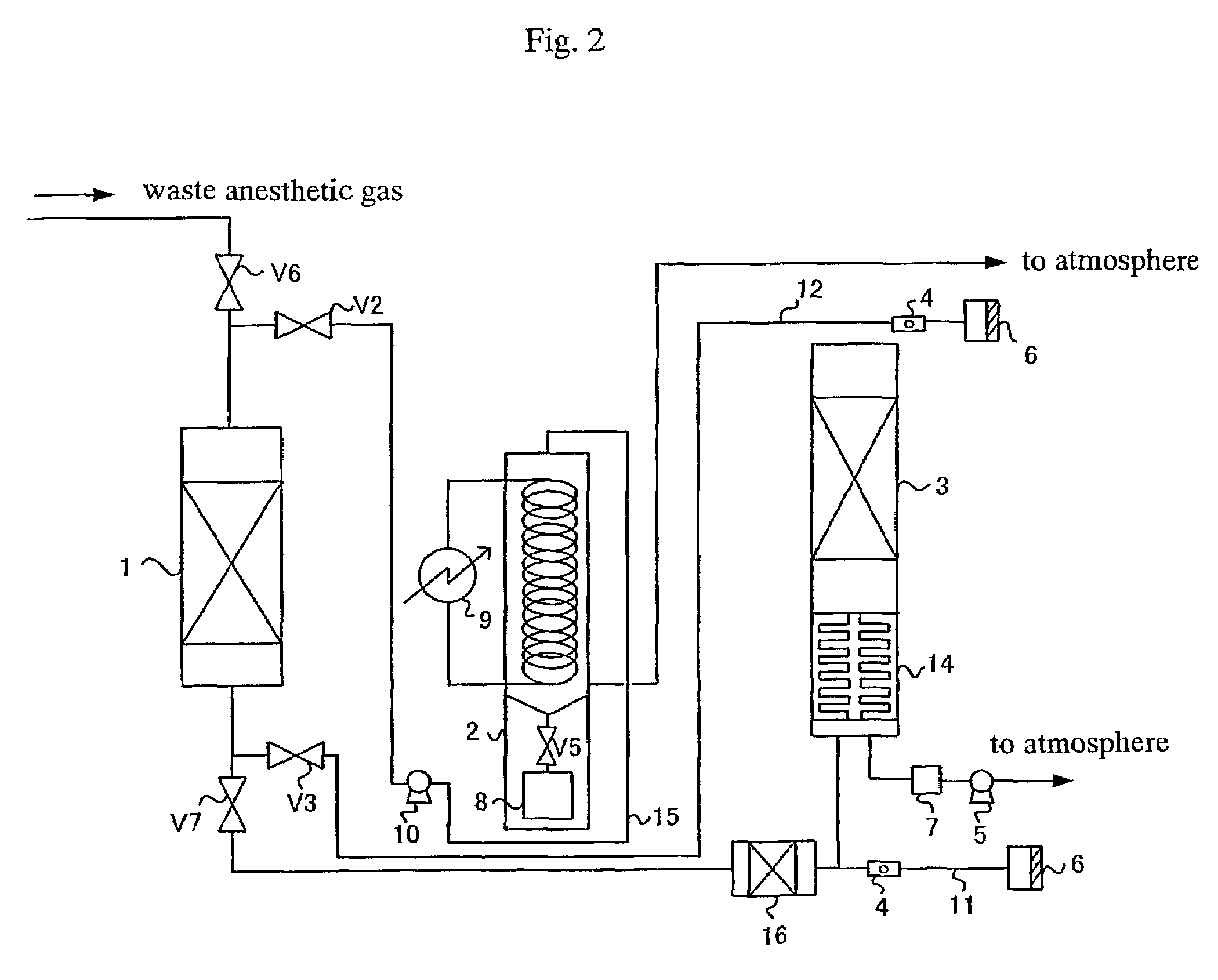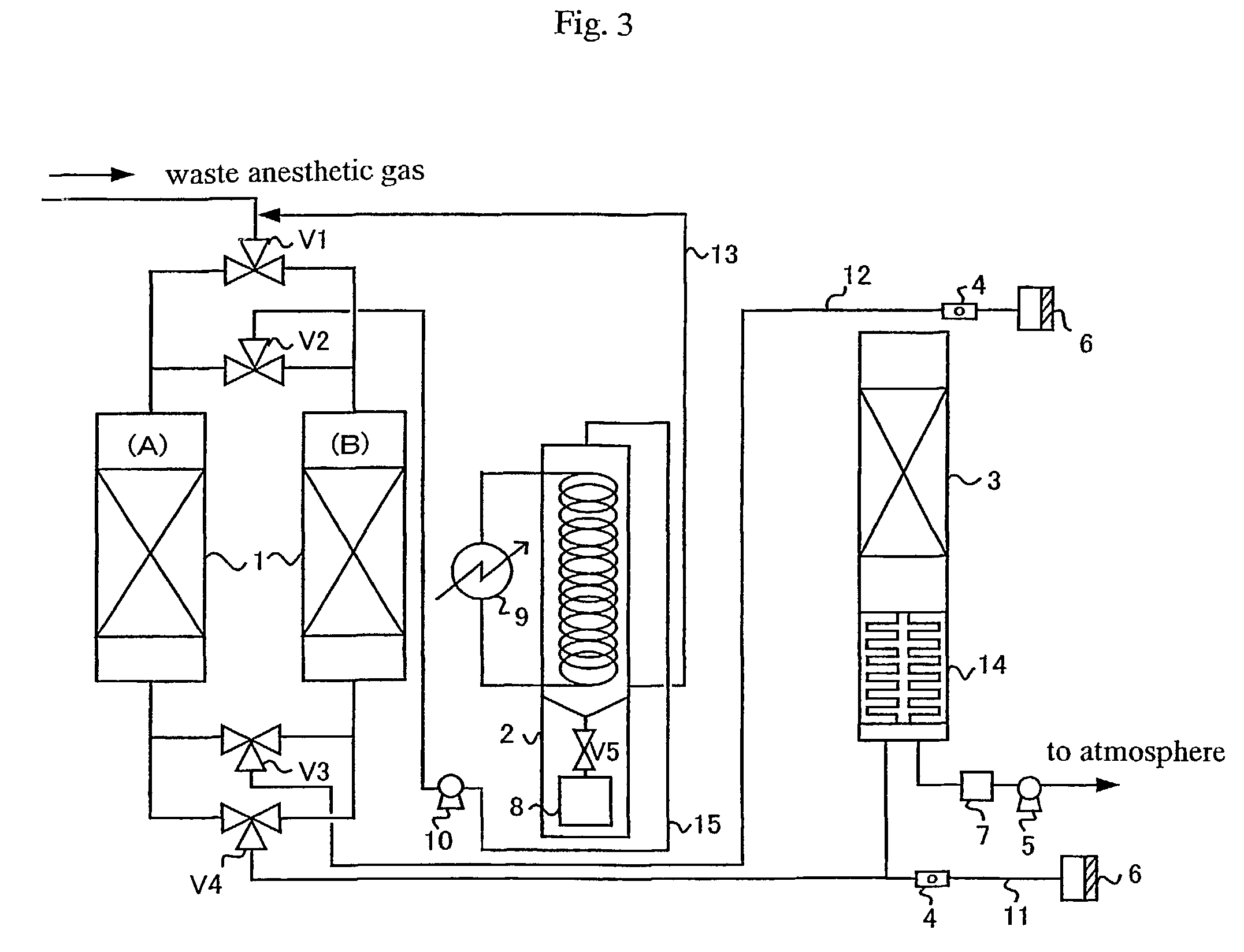Process for treating waste anesthetic gas
a waste anesthetic and gas technology, applied in the direction of metal/metal-oxide/metal-hydroxide catalysts, ratio control, multiple way valves, etc., can solve the problems of extreme reduction of activity, disordered health, and catalyst activity declin
- Summary
- Abstract
- Description
- Claims
- Application Information
AI Technical Summary
Benefits of technology
Problems solved by technology
Method used
Image
Examples
Embodiment Construction
[0065]The present invention is described in detail below.
[0066]The process for treating a waste anesthetic gas containing a volatile anesthetic and nitrous oxide of the present invention is described below.
[0067]The process for treating a waste anesthetic gas of the present invention is characterized in steps of contacting a waste anesthetic gas containing a volatile anesthetic and nitrous oxide with an adsorbent and contacting the gas with a catalyst for decomposing the nitrous oxide.
[0068]The process for treating a waste anesthetic gas of the present invention is characterized in that a step (1) of introducing a waste anesthetic gas containing a volatile anesthetic and nitrous oxide into an adsorbing cylinder and contacting the gas with an adsorbent filled in said adsorbing cylinder, thereby adsorption-removing the volatile anesthetic contained in the waste anesthetic gas is first performed, and then, a step (2) of introducing the gas containing nitrous oxide discharged from the s...
PUM
| Property | Measurement | Unit |
|---|---|---|
| temperature | aaaaa | aaaaa |
| temperature | aaaaa | aaaaa |
| temperature | aaaaa | aaaaa |
Abstract
Description
Claims
Application Information
 Login to View More
Login to View More - R&D
- Intellectual Property
- Life Sciences
- Materials
- Tech Scout
- Unparalleled Data Quality
- Higher Quality Content
- 60% Fewer Hallucinations
Browse by: Latest US Patents, China's latest patents, Technical Efficacy Thesaurus, Application Domain, Technology Topic, Popular Technical Reports.
© 2025 PatSnap. All rights reserved.Legal|Privacy policy|Modern Slavery Act Transparency Statement|Sitemap|About US| Contact US: help@patsnap.com



